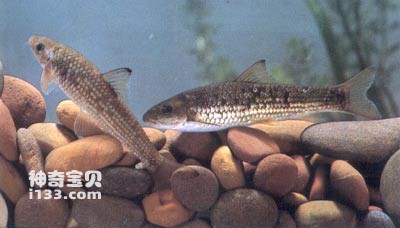Parasinilabeo assimilis belongs to the order Cypriniformes, Cyprinidae, subfamily Parasinilabeo, and genus Parasinilabeo assimilis. Commonly known as: line fish, oil fish.
The body is stout, the abdomen is rounded, the back is arched, the head is small, the snout is slightly pointed, the mouth is lower and arc-shaped. The kiss is subcutaneous, covering the upper jaw. The edges are split into fringes and have small papillae. The upper lip disappears. The snout is directly connected to the lower lip; the lower lip is thick and separated from the mandible, and has a half-moon area covered with small papillae on the front edge. Both upper and lower jaw edges have thin horny edges. There are 2 pairs of barbels, the muzzle barbels are thick and long, and the jaw barbels are thin and short. The eyes are small and the spaces between the eyes are bulging. Scales are medium to large. The base of the dorsal fin is short and has no spines. Caudal fin deeply forked. The body is gray-black and the abdomen is milky white. The dorsal fin and caudal fin are slightly gray.
The alligator dace inhabits the slow flow of gravel bottoms in the upper reaches of rivers and feeds on algae. Distributed in the Pearl River system and tributaries of the Yangtze River such as the Xiangjiang River and Fengshui River. They are small, usually 5-10 cm long, with high fat content and tender and delicious meat. They are an edible fish in the production area.

animal tags:
We created this article in conjunction with AI technology, then made sure it was fact-checked and edited by a Animals Top editor.